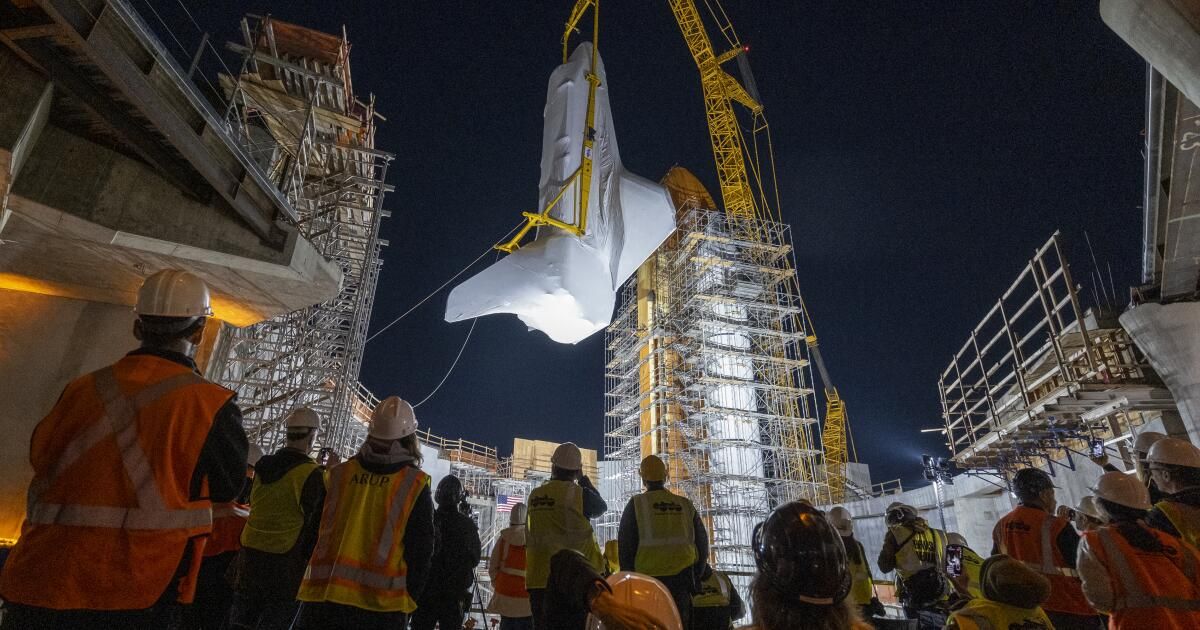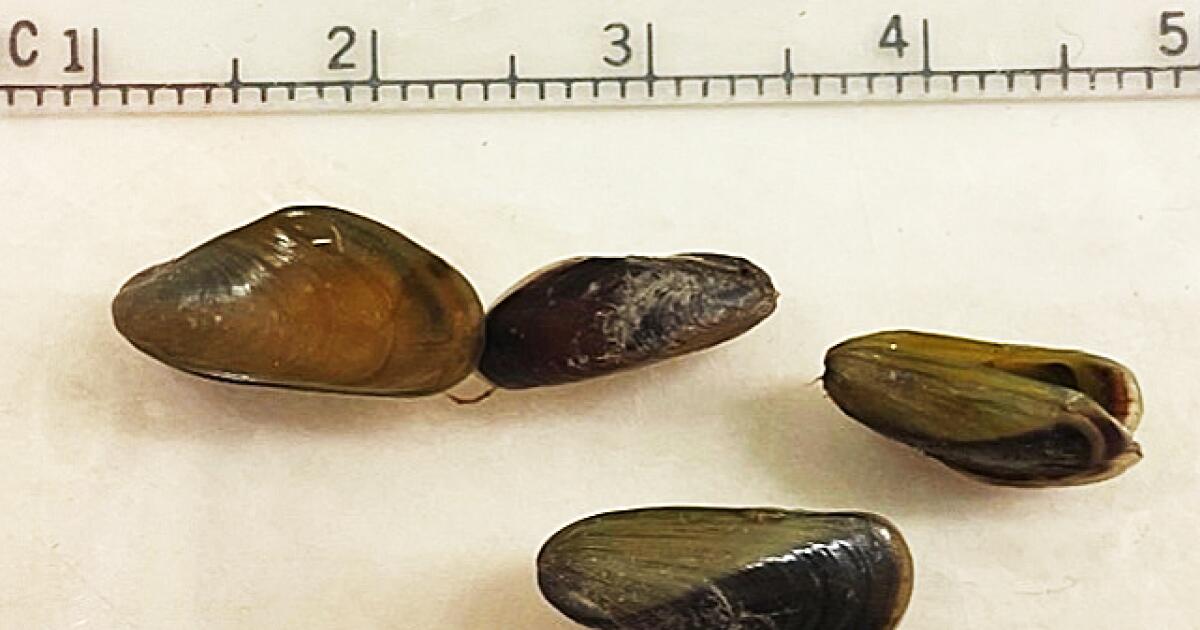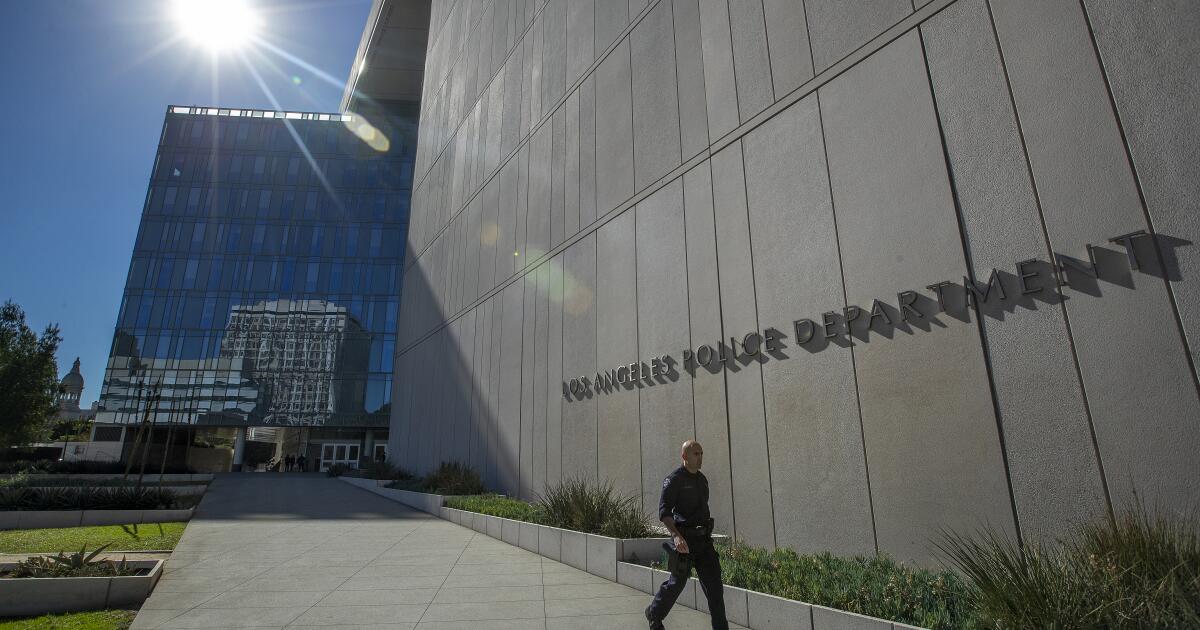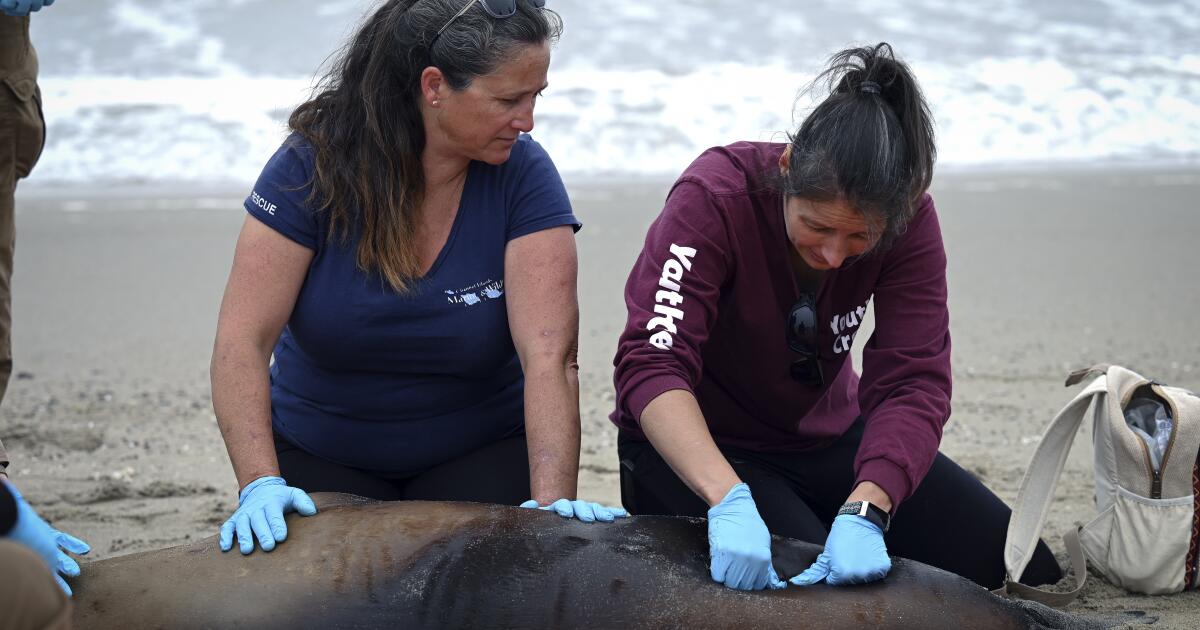The final voyage of the last space shuttle ever built is complete.
Against the black backdrop of the night sky, a crane hoisted a white, shrink-wrapped Endeavor 200 feet into the air before gently lowering it to its final resting space outside the California Science Center on Tuesday morning.
Endeavor was stacked vertically and attached to an already-placed external tank and two solid rocket boosters, the final leg of its 19-year career, which included 25 spaceflights.
The orbiter's ultimate mission, however, is not to touch the stars, but to inspire the next generation of space explorers, serving as a pièce de résistance for the Samuel Oschin Air and Space Center, still under construction.
Crew members inspect the space shuttle Endeavor after it was lifted into position at the future Samuel Oschin Air and Space Center.
(Ringo Chiu / For The Times)
“Tonight has been a very quick process and I think we have exceeded expectations,” said Jeffrey Rudolph, president of the California Science Center. “We were lucky to have good weather and not too much wind.”
Endeavor's full-stack launch position is unusual; No other space shuttle is shown that way. In fact, for the past 11 years, Endeavor has rested horizontally inside the California Science Center, waiting to be moved to its permanent home.
The placement of the orbiter marks the first time that a shuttle designed for space has been assembled vertically outside of a NASA or Air Force facility.
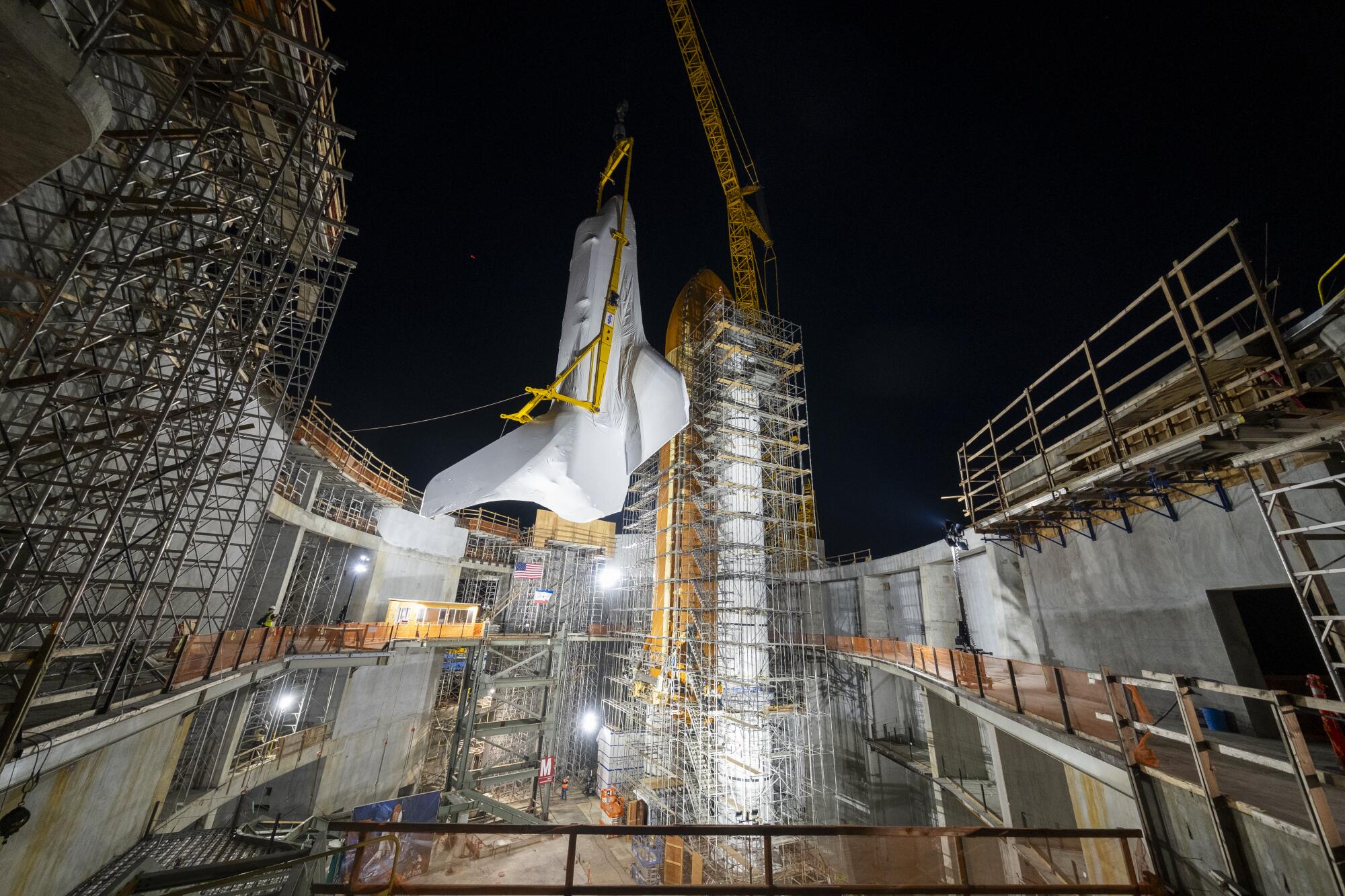
The space shuttle Endeavor maneuvers into position at the California Science Center.
(Ringo Chiu / For The Times)
Shortly after 9:30 p.m. Monday, as the crowd watched from State Drive, crews used an 11-story crane to lift the tail of Endeavor while a larger, 40-story crawler crane used a sling to Carefully lift your nose.
The measure began 30 minutes earlier than planned and authorities said calmer-than-expected winds prompted them to act. The installation was broadcast live.
As the ferry was pointed upward, the smaller crane was removed. The largest began lowering the orbiter shortly after midnight.
The positioning had to be precise. The shuttle's nose was raised 200 feet into the night sky so the rudder could clear 80 feet of space. Endeavor was then rotated 17 degrees clockwise to provide enough clearance for its 78-foot wingspan before being carefully lowered, according to Larry Clark, a retired space shuttle engineer who worked 44 years at the Kennedy Space Center. in Florida.
Endeavor's slow descent was “terrifying” to astronaut Garrett Reisman, who pointed to the far end of the rudder as he approached to within 20 feet of the second-level platform.
“They really had to thread the needle,” said Reisman, who flew on three space shuttles, including effort on his first mission in 2008. “Fortunately, we only have to do this once.”
Reisman, a professor of the practice of astronautics at USC, said the stacked formation offers a true view of the orbiter.
“People always said it was much bigger or much smaller than expected, and that's because in previous viewings, it was right on top of you,” Reisman said. “You can get a sense of the scale here, when you're standing right here, next to the external tank and the rockets.”
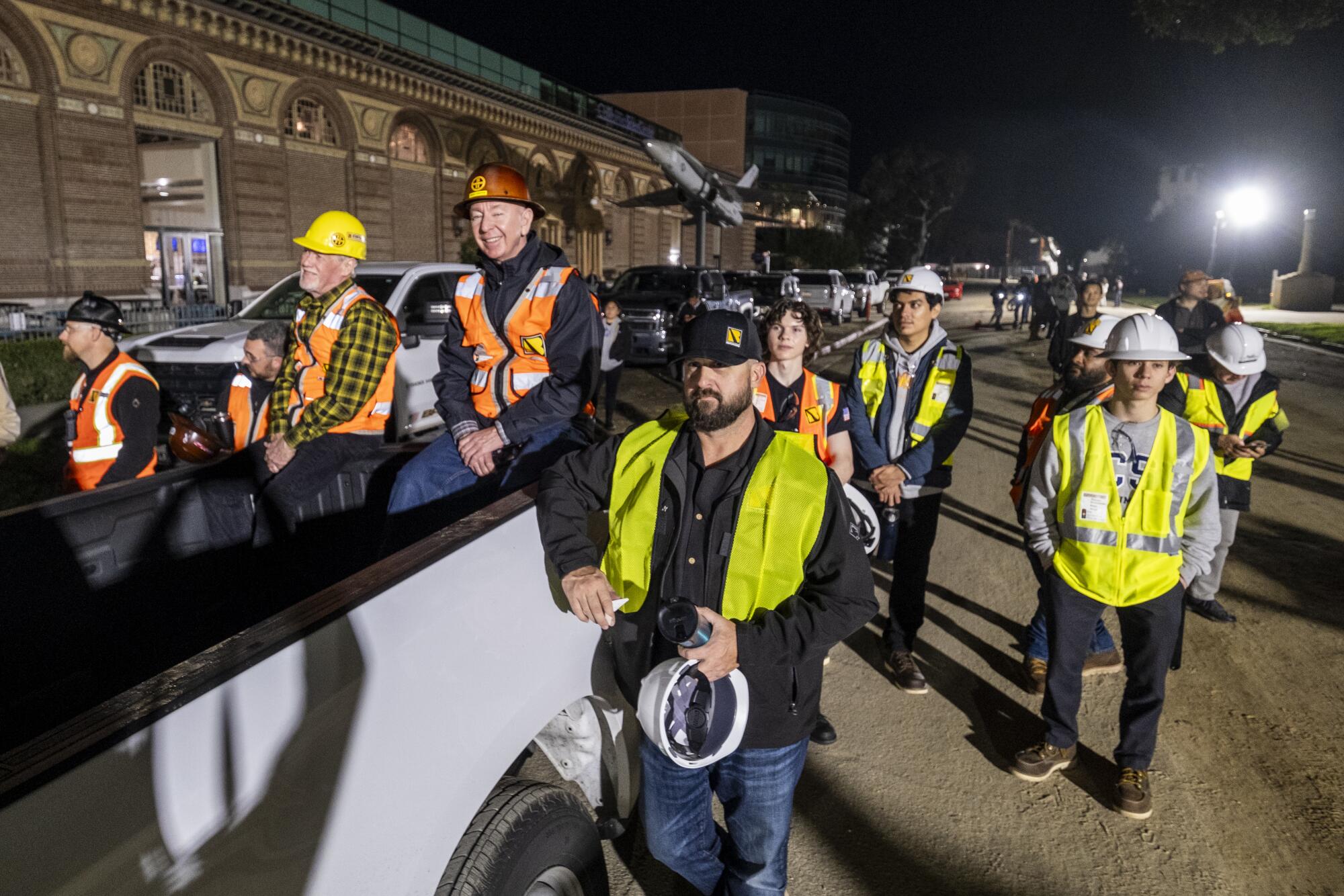
Crew members watch as the space shuttle Endeavor is moved into position at the future Samuel Oschin Air and Space Center at the California Science Center.
(Ringo Chiu / For The Times)
Workers and engineers threw electrical cables and ropes from the scaffolding while the last few feet of movement were handled by an operator of the Hydra-Set-mounted hydraulic control box.
“Once the crane positions the orbiter about 4 inches from where it needs to be, [the operator] it will take care of going down the rest of the way in micro-inch capacity,” Clark said.
The first part of Tuesday's move is known as the “soft companion” and involves the orbiter's ascent and descent near the external fuel tank and rockets.
The second part will be the “capture,” the process of connecting Endeavor to the 15-story external fuel tank called ET-94. The giant orange tube is the last such tank in existence.
The “hard dunk” could happen Tuesday night, but it could take a couple of days, Rudolph said. During that time, the crane sling will be removed, the space shuttle will remain unaided, and all of its parts will be bolted into place.
“Endeavor's current position is basically where it will be,” Rudolph said.
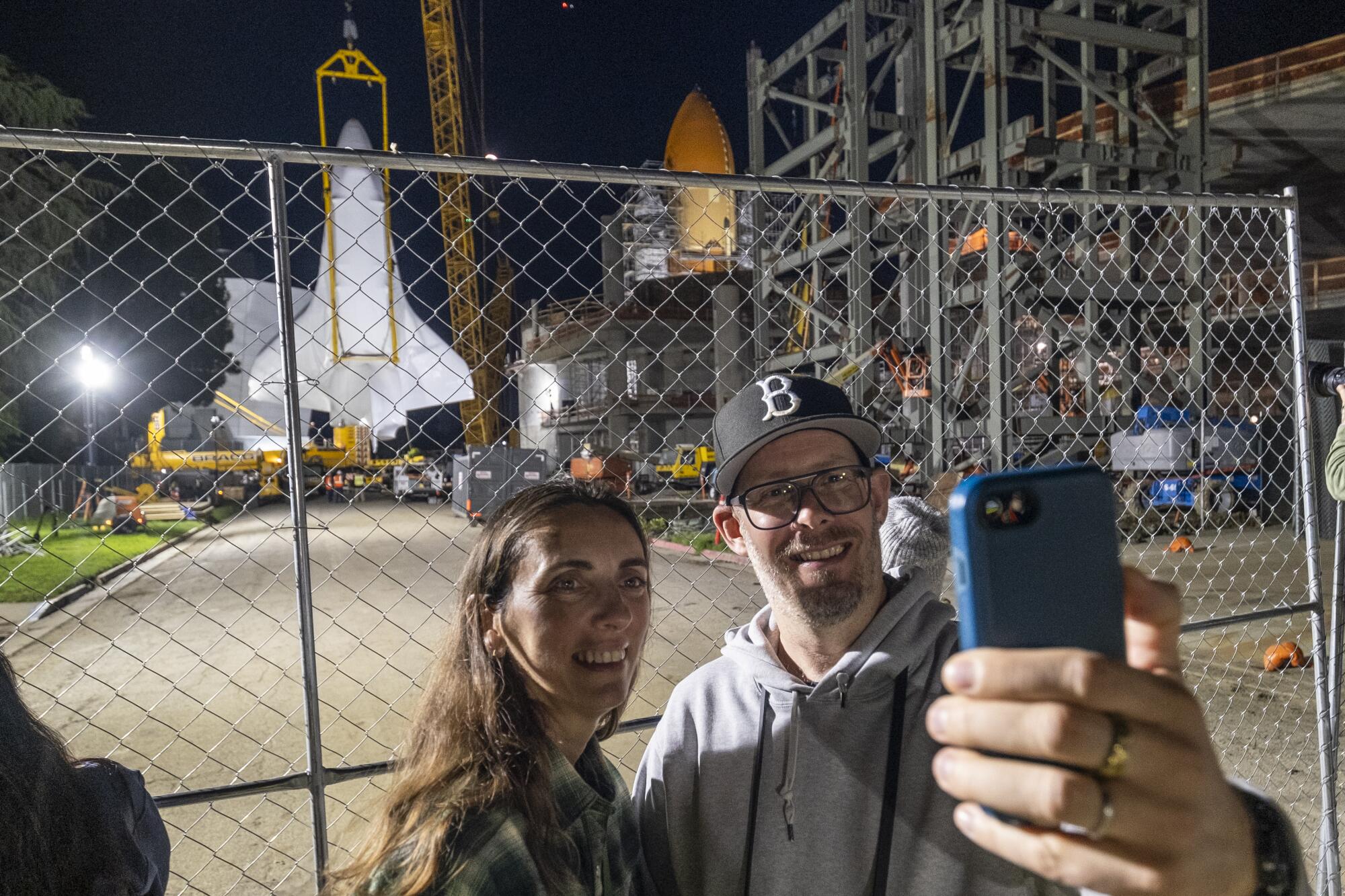
Piers Brinkley, right, and Clare David take photos as the space shuttle Endeavor prepares for liftoff at the California Science Center.
(Ringo Chiu / For The Times)
Engineers wrapped the shuttle a week early, “using a large heat gun powered by a propane tank,” according to Clark. The orbiter was enclosed to protect it from workplace contamination and the elements. The cover is not expected to be removed until construction of the 20-story Oschin Center, which will be built around the entire exhibit, is complete.
It will be a few years before the shuttle is accessible to the public while the space museum and its other exhibits are built.
The stacking process at the Los Angeles site presented challenges for engineers who were accustomed to the multiple cranes and platforms used at the Kennedy Space Center.
Scaffolding was constructed, removed and adjusted in various parts of the site.
The rockets, external tank and orbiter were installed over a three-month period: the twin 149-foot solid booster rockets were deployed in November, the external tank in early January and the orbiter on Tuesday.
It took about six hours to install the rockets, about the same time needed to complete Endeavor's soft companion.
However, the transfer of the external fuel tank was delayed by winds and took 14 hours over two days to complete.
The final move comes more than a decade after Endeavor roamed the streets of Los Angeles. The shuttle received rock star treatment upon her arrival, with people lining the streets to watch the ship move from Los Angeles International Airport to California Science Center in October 2012.

